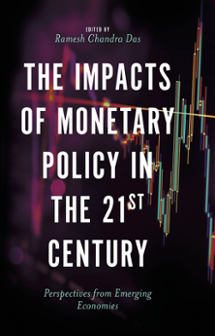The Impacts of Monetary Policy in the 21st Century: Perspectives from Emerging Economies

Synopsis
Table of contents
(29 chapters)Section I: Monetary Policy Effects at the Global Perspectives
Abstract
Low interest rates around the world due to adaptive monetary policy regulations for some time a source of concern for the banking sector and depositors of the bank. In this environment, interest rates have raised concerns about nominal deposit interest rates which cannot be lowered below zero without destroying bank customers. Bank loans are becoming less vulnerable to lower interest rates on deposits approaching zero, indicating that the financial channel is weakened when interest rates are close to zero. Demographic pressures associated with longer life expectancy, China's gradual integration into global financial markets and changes in supply and asset requirements are attributed as reasons for low interest rates. Volatility of CPI inflation, interest rates on bank deposits attracting income tax and discontented depositors due to lower rates are cited as reasons for the suffering of bank depositors. This chapter thus discusses the impact of negative rate on economic growth and bank customers besides discussing the future trends of negative interest rates.
Section II: Aspects of Monetary Policy in Emerging Economies with Special Focus on Indian Economy
Abstract
The systematic risks related to credit financing has received significant attention in the academic domain during and after any financial crisis. However, the role of insurance has not been adequately studied in the context of crises. The extant literature also shows that the scale of credit financing depends upon the availability of credit insurance and on the policy orientation. Past evidence shows that demand for credit insurance was significantly high during the crisis period. Therefore, this chapter proposes to study the role of various combinations of these two aspects near the period of crisis. The findings of this chapter are based on the outcomesof previous research articles on these topics. The research articles are gathered from various online databases for the years 2000–2014 for the G7 economies. This chapter has alsoincluded facts from contextual policy documents on monetary and fiscal policies where it finds them necessary. Broadly, this chapter describes the role of policies when two mutually dependent industries interact and adversely impact market equilibrium.

- DOI
- 10.1108/9781789733198
- Publication date
- 2019-09-02
- Editor
- ISBN
- 978-1-78973-320-4
- eISBN
- 978-1-78973-319-8